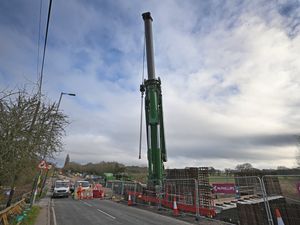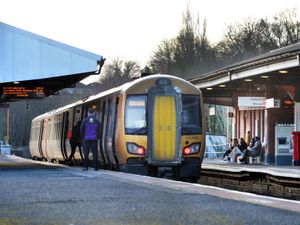Uphill battle: Behind the scenes at massive M5 Oldbury roadworks
Work to repair a major flyover on one of the area’s main motorways is way behind schedule – but a look behind the scenes reveals why.
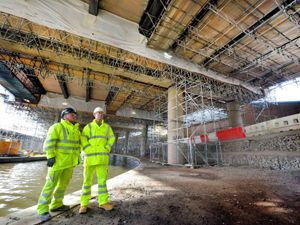
This is the biggest concrete repair job ever undertaken in Britain and the largest scaffolding project in Europe.
The contractors and project managers assigned to the job wear Kevlar body protection, work in all weather, and face abuse from the public as they work on the site.
This is life behind the scenes of the mammoth M5 repair job, which motorists crossing the West Midlands have been cursing for the last 18 months or so.
WATCH: Behind the scenes at M5 roadworks
To the thousands of drivers passing each day, the maintenance work looks simple – just fill in a few potholes and lay down some tarmac. Why is it taking so long?
Well, there is a lot more to it – and those working on it say that is why it is running behind its planned schedule.
The current deadline for completion is this autumn, having been pushed back from spring.
Abuse
Ground crews have faced regular abuse from the frustrated passing motorists, says Martin Phillips, a senior manager on the project. Some have even had bottles of urine thrown at them.
“It is tough work,” says Martin. “Some of the lads don’t like the repetition of fixing the concrete.”

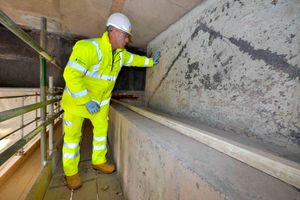
Contractors also have to deal with shocking weather by working in conditions from blazing heat to icy cold and torrential rain.
When the weather is really bad – as with last year’s “Beast From The East” – it can slow down the work .
What Highways England wants to show the public is the unseen complexity of the work.
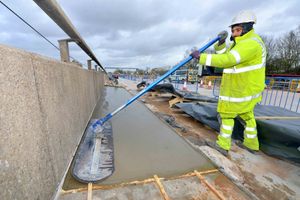
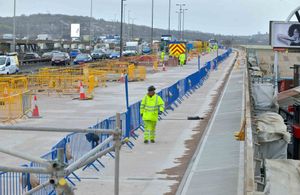
Just a few feet beneath the tarmac, contractors are repairing the concrete from underneath.
Some of the broken concrete is easy to identify, some is far more difficult. It is repaired from both on top of and underneath the highway, by people working just centimetres away from the stream of cars and lorries that use the route.
Complexities
“This is what the public don’t see and the complexities of the project,” says Mark Round, a communications manager at Highways England.
To repair the concrete, ground crews first have to remove it. It’s a dangerous job.
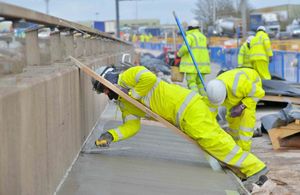
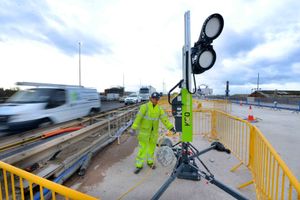
Contractors use a hydro-blaster which shoots out water with 30,000 pounds of force per square inch.
At this speed, stray pieces of concrete can shoot off faster than bullets. The operators wear three layers of Kevlar for protection.
“This can be exhausting, especially in hot weather,” says Mark.
Delay
The project officially began in autumn 2017, with the objective of repairing a 1.8-mile stretch of the motorway, between Junction 1 for West Bromwich and Junction 2 for Oldbury.
A 30mph speed limit has been in place for the duration, as have narrow lanes for traffic to squeeze through, leading to delays and frustration for the public.
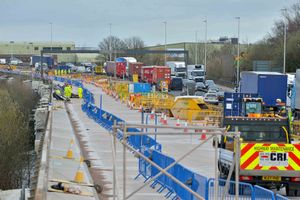
Initially, Highways England anticipated there would be less than 2,000 repairs that needed doing.
However, as contractors investigated the highway, they found more. A lot more. So far they have repaired more than 8,000 pieces of broken concrete along the M5 Viaduct.
It is now more than half-completed, with work on the southbound carriageway finished and half the northbound remaining.
Massive scheme
Catherine Brookes, regional director at Highways England, adds: “Yes the project is quite complicated. The work we are doing is the biggest construction repair scheme ever carried out in the country.
“This is the largest scaffolding contract in Europe, which is 3km long around the whole of the viaduct.

“We have faced challenges so far, done half the work in the northbound carriageway, 8,000 concrete repairs, over four times as many as we had anticipated.
“Some things are easier. We are making great progress. We are working hard to finish the roadworks and minimise the impact on traffic.”
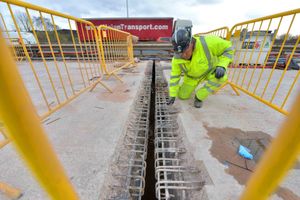
She continues: “At the moment we are anticipating finishing work later this year. Obviously because we are still out there we constantly have to be reviewing the programme.
“We carry out essential maintenance on strategic roads. Oldbury viaduct is one of biggest projects ever undertaken. This particular stretch is complex and that’s what makes it a difficult road.
“The work that we are doing is removing all of the surfacing, removing waterproofing layer suits below layer, then carrying out concrete repairs wherever necessary.”

